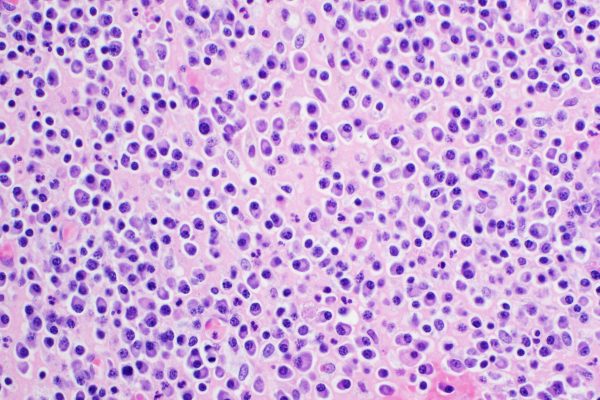
The standard of care for newly diagnosed myeloma (NDM) patients eligible for autologous stem cell transplantation (ASCT) is a combination of bortezomib, thalidomide, and dexamethasone (VTd). CASSIOPEIA is a two-part randomized, phase III, open label clinical trial in NDM patients who were eligible for transplant.
In the first part of CASSIOPEIA trial, the addition of daratumumab (DARA) to VTd plus ASCT was approved for transplant-eligible NDM patients. An interim analysis of part-2 of CASSIOPEIA trial was recently reported in the journal Lancet Oncology which evaluated the role of DARA as a maintenance agent.
Patients (n=886) with partial or better response in part 1 of the study were randomized (1:1) to either receive DARA at 16 mg/kg intravenously every 8 weeks or observation for 2 years. The interim analysis assessed the efficacy and safety of DARA maintenance in patients with at least a partial response (PR) in part 1 of the study, regardless of induction/consolidation treatment, after 281 progression free survival (PFS) events. The primary endpoint of part-2 study was PFS. Secondary endpoints included time to progression (TTP), rates of complete response (CR), minimum residual disease (MRD), and overall survival (OS).
At a median follow up of 35.4 months, median PFS was not reached (95% CI not evaluable [NE]–NE) in DARA maintenance cohort vs 46.7 months ((40·0–NE) with observation only (hazard ratio 0·53, 95% CI 0·42–0·68, p<0·0001). PFS benefit in patients with DARA was consistently observed in most subgroups. Additionally, significantly longer median TTP (NR vs 46.7 months; HR, 0.49; 95% CI, 0.38-0.62; P <.0001), and more CR was achieved in DARA arm than in the observation arm (72.9% vs 60.8%; OR, 2.17; 95% CI, 1.54-3.07; P <.0001). Also, MRD negativity (10-5) in patients with CR was more in DARA arm than observation arm (58.6% vs 47.1%; OR, 1.80; 95% CI, 1.33-2.43; P =.0001). However, significant interaction with induction/consolidation treatment arm (P <.0001), with the PFS benefit, was observed only in VTd arm (HR, 0.32; 95% CI, 0.23-0.46), unlike the D-VTd arm (1.02; 0.71-1.47).
Most common grade 3/4 adverse events (AEs) seen in the DARA vs observation groups were pneumonia (2.5% vs 1.4%), lymphopenia (3.6% vs 1.8%), and hypertension (3.0% vs 1.6%). Around 22.7% serious AEs were observed in the DARA arm vs 18.9% in the observation group, with pneumonia (2.5% vs 1.6%) being most common. Secondary primary malignancies were observed in both DARA and observation arm (5.5% vs 2.7%). Thirteen patients (3.0%) discontinued DARA due to an AE.
Conclusion
The CASSIPEIA trial part-2 demonstrates clinical benefits with DARA transplantation eligible NDM patients. The authors concluded that “DARA significantly increased deeper response and MRD negativity rates vs [observation], and was well tolerated with no new safety signals.”
Reference
Notifications